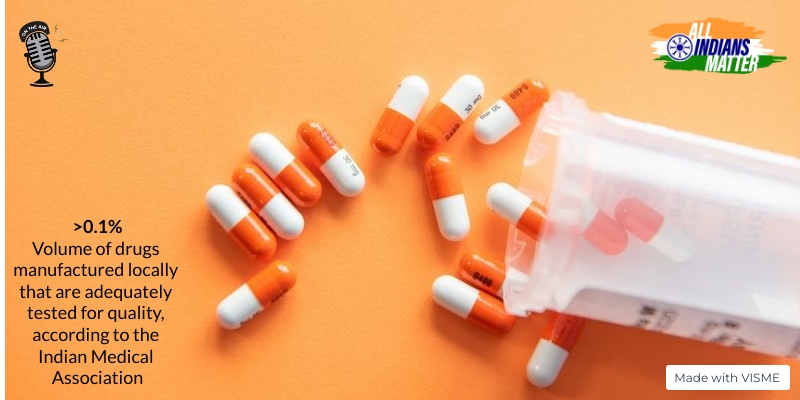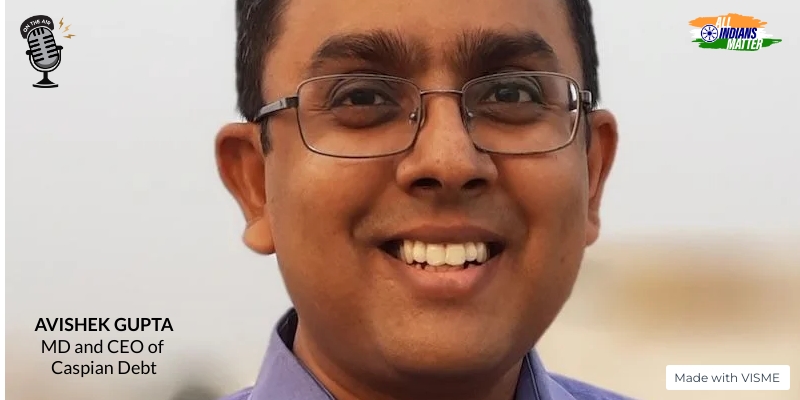Ashraf Engineer
May 18, 2024
EPISODE TRANSCRIPT
Hello and welcome to All Indians Matter. I am Ashraf Engineer.
You probably knew that the Indian pharmaceutical industry is the largest producer of vaccines in the world but did you know that it’s also the largest manufacturer and exporter, by volume, of generic drugs? Generic drugs have been in the news over the past few years, pushed as cheaper alternatives to branded drugs. They are, in essence, medications created the same as an existing branded drug in dosage, safety and the way they are administered. A generic drug works exactly the same way and provides the same clinical benefit as a branded drug. It’s no wonder that they are considered vital for a country like India, where the costs of medicines are often prohibitive. In recent times, however, they’ve been at the centre of a standoff between the Central Government and the Indian Medical Association or IMA. So, what exactly is the problem and what lies ahead?
SIGNATURE TUNE
Not too long ago, the National Medical Commission, or NMC, ordered that all doctors prescribe generic drugs, failing which they could face penalties or a suspension of their licences. The IMA opposed it, asking why the government was allowing branded drugs at all if wanted to promote generic drugs.
To understand the dispute, we need to go back seven and a half decades.
When India gained independence, almost 90% of the Indian market was controlled by western companies. About a decade and a half later, the government decided to boost Indian firms but the inflection point came only in 1970. That year, the Indira Gandhi government passed the Patent Act that barred medical products from being patented in the country. Only the process of manufacturing could be patented. The law also allowed the Indian Patents Office to force patent holders to licence them to other players cheaply if they were not being used for social benefit.
Indian companies could now make drugs locally without violating the patents of branded drugs. All they needed to do was choose a different manufacturing process.
Many Indian firms adopted reverse engineering to manufacture the drugs. Reverse engineering simply means that the companies looked at the product and worked backwards to formulate a process to make it. Often, even a minor tweak in the process was enough to circumvent violations.
Within a decade, the number of Indian pharma firms more than doubled and the period between a branded drug being released and an Indian version being produced reduced drastically.
This helped the Indian pharma sector and, by 2006, local companies accounted for 95% of the domestic market.
The downside was that these drugs worked on low margins, so the companies never had enough money for research and development.
It was time for another inflection point.
On January 1, 1995, India signed the Trade-Related Aspects Of Intellectual Property Rights or the TRIPS Agreement. Now, India was mandated to recognise patents and grant exclusive marketing rights to some products. India was given till 2005 to prepare its pharma industry for this.
At the time, the signing was widely opposed but it forced Indian firms to invest seriously in R&D and formulate new drugs rather than copy existing ones.
The government stepped up its support by amending the Patent Act and promoting research in institutes. This included the setting up of the National Task Force to revise curricula for undergraduate and graduate studies in life sciences and biotechnology.
In 2021, the government introduced the Rs 15,000-crore Production-linked Incentive Scheme for pharma. This, too, was aimed at reducing import dependence and boosting innovation.
While the Indian pharma industry has travelled a long road since Independence, the one lacuna that persists is quality. The IMA says the quality of generic medicines can be questionable, claiming that less than 0.1% of the drugs manufactured locally are adequately tested for quality.
The IMA also suggested that the Centre introduce a ‘one drug, one quality, one price’ regime in which all brands should be sold at the same controlled price or only generic medicines allowed while ensuring adequate quality testing. Quality is a serious issue because we’ve had a series of medicine-linked disasters, such as child fatalities after drinking adulterated cough syrup.
The pricing, of course, is the principal reason generic drugs exist. The National Medical Commission argued that “out-of-pocket spending on medications accounts for a major proportion of public spending on healthcare”. The discounts, ranging between 30% to 80%, offered by generic drugs brings down costs.
The pharma industry, meanwhile, has warned that falling prices are eroding bottomlines. It is unhappy with the pressure to reduce prices, pointing out that quality will suffer because of it.
The government says it is simply trying to improve healthcare affordability through generic medicines. This includes setting up a chain of generics-only stores, which have in turn raised the sales of trade generics or drugs sold without physicians’ involvement.
While there is no doubt that medicines need to be made affordable in India, there can be no compromise on quality. There should be no succumbing to pressure from large pharma companies that have made big money from those who cannot afford it but there is no reason why generic and branded drugs cannot coexist. The choice can be left to the consumers. The problem, of course, is that they know no better and rely on their doctors to recommend which drug to buy. Most doctors would have patient safety and drug quality on their minds when they prescribe a drug but many could be swayed by benefits from pharma companies. This could skew the market and put at a greater disadvantage those who are already severely disadvantaged. That’s where the government needs to focus on without stepping back on its push for generics.
Thank you all for listening. Please visit allindiansmatter.in for more columns and audio podcasts. You can follow me on Twitter at @AshrafEngineer and @AllIndiansCount. Search for the All Indians Matter page on Facebook. On Instagram, the handle is @AllIndiansMatter. Email me at editor@allindiansmatter.in. Catch you again soon.






